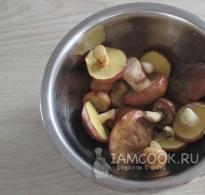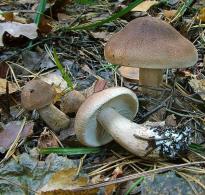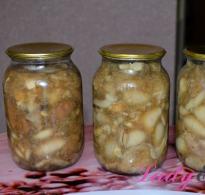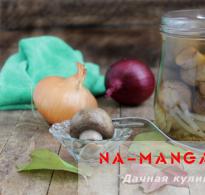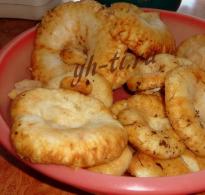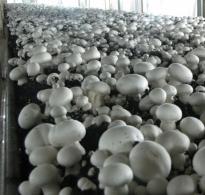Description of the yellow milk mushroom, where the mushroom grows and how to cook
A truly Russian treat, salted or pickled yellow milk mushrooms are an important guest of the festive table. Cookbooks point out that the milk mushroom is the most delicious mushroom to pickle. Collecting this mushroom is an exciting activity for every mushroom picker, thanks to his ability to hide well.
Yellow Milk (Lactarius scrobiculatus), belongs to the class Agaricomycetes, genus Mlechnik, russula family. Other names are podskrebysh, yellow podgruzd, yellow podgruzd.
- the cap is 5-15 centimeters in diameter, at first it is convex in shape with a small depression in the center, later it becomes prostrate, the middle is funnel-shaped, depressed, the edge of the cap is shaggy, rolled down. The color ranges from golden yellow to dirty yellow. Concentric zones are more or less pronounced. After rain, the surface becomes sticky and slimy.
- frequent plates, weakly running down. The initial color of the plates is white, later it becomes pink or yellowish.
- the flesh is white (it turns yellow when touched), it secretes a pungent white milky juice (bitter in taste), which turns yellow when it comes into contact with air (the color does not change in rainy weather).
- short and thick leg, 5-6 cm high and 3-4 cm in diameter, pale yellow in color, tapering at the bottom, covered with brown spots. Hollow inside.
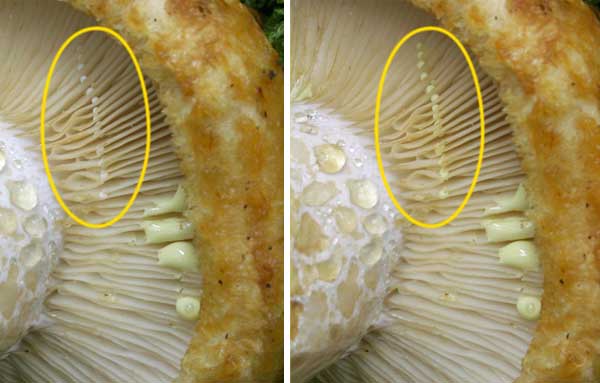
This is a conditionally edible mushroom of the 2nd category. The mushroom received this classification because of the bitter milky juice found in the pulp of the fruiting body of the fungus. When cooked correctly, unpleasant taste sensations are neutralized. There are no poisonous and inedible twins; according to the description, the yellow milk mushroom is a bit like a real milk mushroom.
Spreading
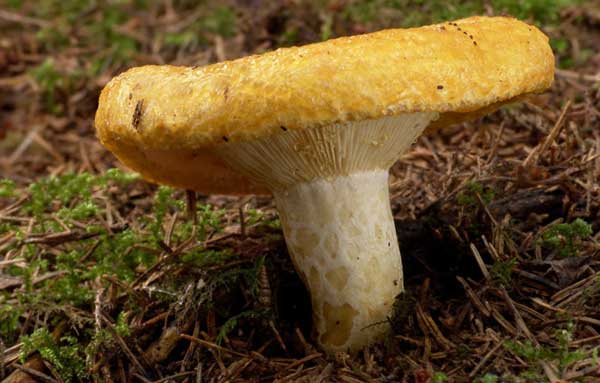
Yellow milk mushrooms mainly grow in coniferous and deciduous forests, especially pine and birch, in forests with fir and spruce. Skillfully hide from mushroom pickers under the leaves, usually gather in groups. The largest harvest can be harvested from the first days of August until late autumn. The main collection sites are located in the northern part of central Russia and in Siberian forests.
How to collect
To collect this species requires knowledge of the places of their distribution, as well as the attentiveness of the mushroom picker. It is best to search in lowlands, in clearings and along clearings in the early morning. Yellow milk mushroom is an autumn mushroom and is remarkably able to disguise itself in the fall of leaves and needles, in the grass. The most important rule of the mushroom picker is to carefully cut the mushroom with a sharp knife (do not pull it out) so as not to damage the mycelium. The mushroom picker is interested in coming to the same place for a new harvest next year. You should not cut off old, spoiled mushrooms - they have an increased concentration of substances harmful to humans.
Primary processing and preparation
Yellow milk mushrooms are predominantly salted and pickled, pre-soaking and heat-treating. Mushrooms must first be thoroughly washed in running water, best of all under running water from a faucet from litter. Having started cleaning, they remove areas damaged by pests and nature, cut off part of the leg.
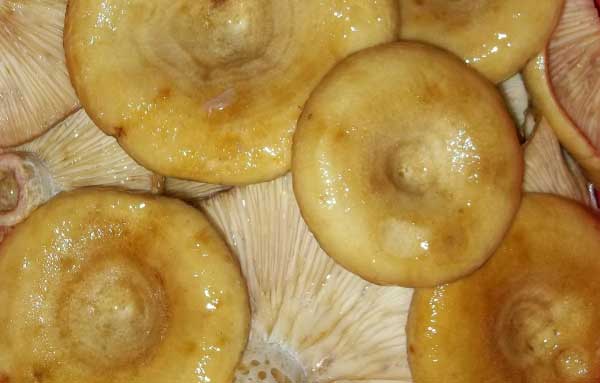
Marinating is done in two ways, boiling mushrooms in a marinade or separately from it in boiling water. When cooking yellow milk mushrooms, it is important not to overcook: mushrooms that have sunk to the bottom of the pan with a transparent marinade are considered cooked. After processing and cooking, the mushrooms are laid out in sterilized jars, poured with marinade and rolled up with metal lids.
Before salting, the mushrooms are soaked for 1-2 days in salted water. Large specimens should be cut, small ones should be immersed entirely in a salting container (wooden tubs, enameled containers). There are three types of pickling: hot, dry and cold (your choice). Mushroom pickles are stored at a strictly defined temperature: from 0 to 6 degrees Celsius.
It is not accepted to dry mushrooms of this type.
Benefit and harm
This tasty and incredibly nutritious product contains a group of B vitamins, which are responsible for the prevention of the human nervous system, prevention and elimination of neuroses and depression. Doctors willingly include this product in the diet of diabetics as a sugar regulator.
The harm lies in improper preparation or excessive consumption, which leads to gastrointestinal disorders. The preprocessing process should be strictly followed.
The yellow inhabitant of the forest kingdom is tasty and healthy, it brings joy to mushroom pickers, pleasure to the stomach, and health to the body. The main thing is to know when to stop.

